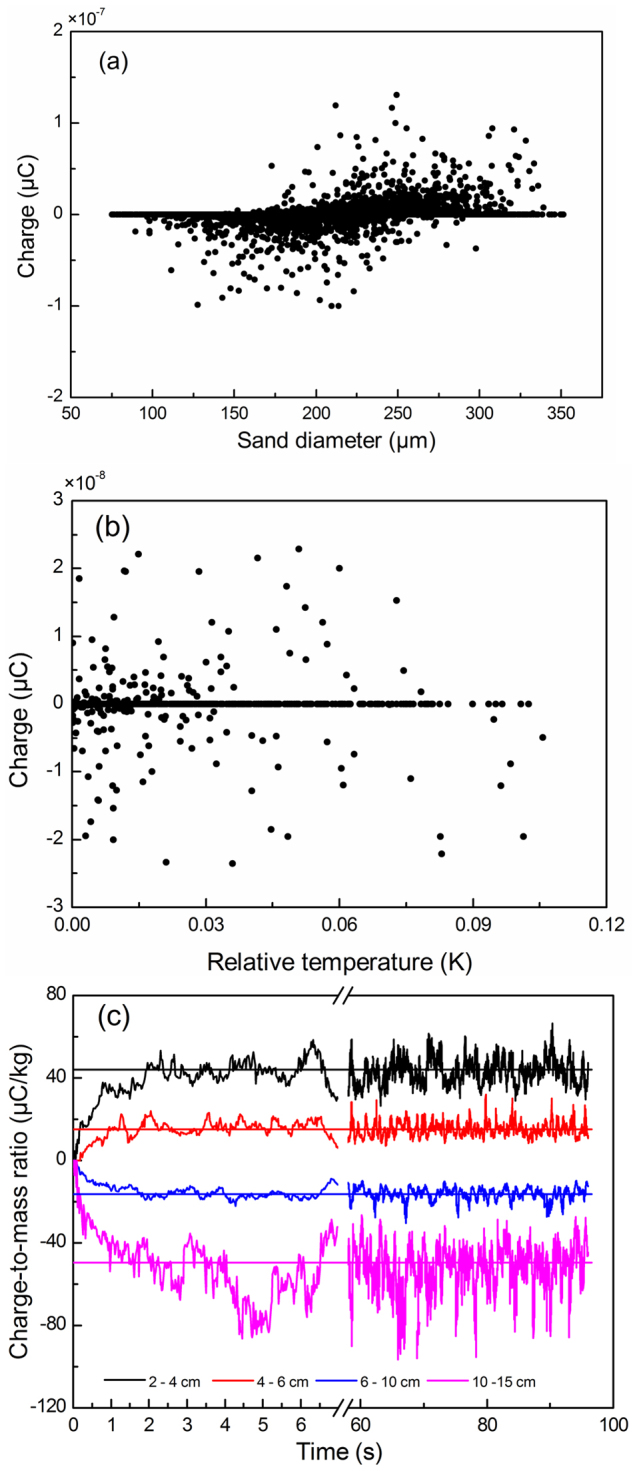Figure 3.

(a) The different sizes of the charged sands in a “mixture” sand system in the wind tunnel by numerical simulation, at an inlet velocity, 20 m/s.The sand diameter follows Gaussian distribution with a mean of 203 μm and a variance of 60. Almost all the sands with a diameter of more than 225 μm were positively charged while the sands with a diameter of less than 175 μm were negatively charged. (b) The charged sands and their temperature increment of the “uniform” sand system in the wind tunnel by numerical simulation, at an inlet velocity, 20 m/s; the sand diameter was 200 μm. (c) The time-varying charge-to-mass ratio of the saltating sands or sands in suspension in the “mixture” sand system at the different heights of the wind tunnel outlet by numerical simulation. The electrical conductivity of soil was between 0.005 S/m and 0.45 S/m, which increased with increasing water content41. In this study, the electrical conductivity of sand a2 = 0.01 S/m was chosen and the corresponding coefficient a3 = 0.8 was assumed.
